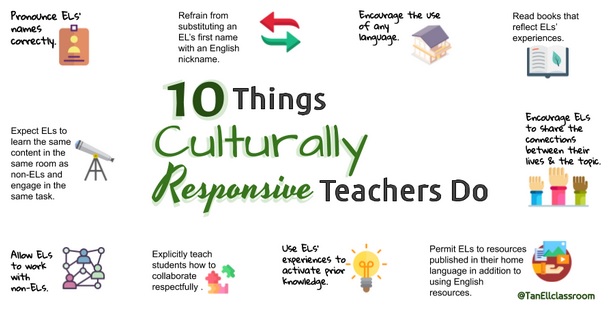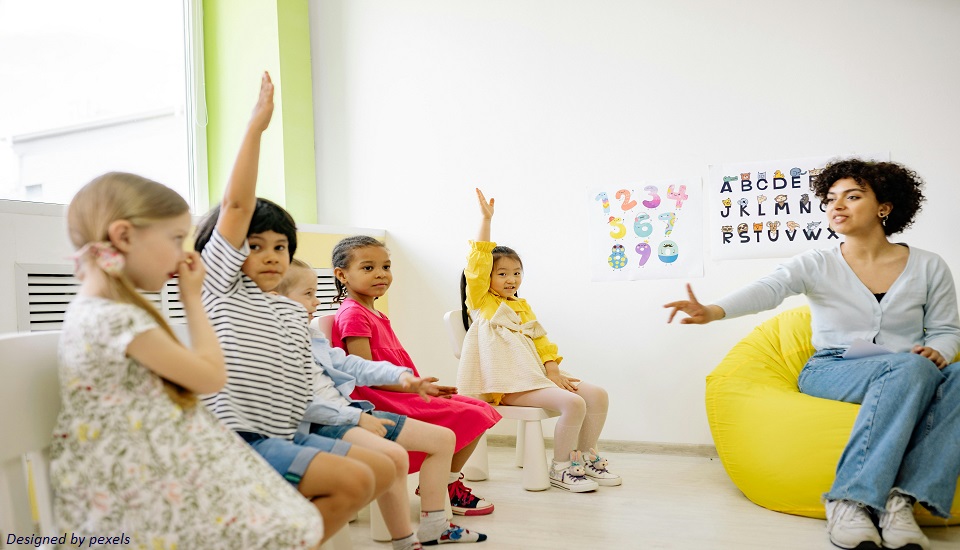ESL lessons are always designed to provide a deeper understanding of the language being learned and the connection students can have with the culture behind it. By providing materials and creating activities that can relate to the student's native languages and cultures, you as educators must show them that you respect their culture and heritage and that they are all valued.
So what can you as educators do to improve student learning? Here are 6 ways to make English teaching more culturally engaging.
6 Strategies In ESL Classrooms For Culturally Engaging Teaching
Teachers must take the initiative to provide the ideal learning environment that motivates students to investigate, debate, and practice cultural components to include culture in ESL classes.

Source: buchanansblog.home.blog
Here are a few ways to culturally engaged classrooms:
1. Affirm Students Cultural Connection
One size does not fit all, and you need to keep that in mind. This is because every student was raised in a different culture. Because of this, each student needs to receive empowering training that is relevant to their interests and personal experiences. Students must be regarded as equal persons and encouraged for both their uniqueness and commonalities to achieve this.
To develop the abilities required in today's society, teachers must make use of the past information that the pupils have acquired. As a result, teachers should let students make decisions about their assignments and emphasize the importance of finishing them.
Do you follow us on Social Media? We regularly share upgraded educational content, tips, feedback, and more. Check us out by clicking the profiles here - Facebook / Twitter / LinkedIn / Pinterest / Instagram / YouTube
2. Foster An Inviting Learning Environment
This is a crucial step in helping pupils feel like they belong. You may experiment with the seating, the colors, and the music in a real classroom. Teachers can supply background music for their online courses.
The professors' welcome is the most important component of this process, though. As such, you have to make an effort to build a relationship of trust with your students. A culturally sensitive teacher needs to be kind, understanding, and patient.
3. Accept Students Holistically
Teachers' acceptance of their pupils is essential since it will improve their performance and help them succeed academically. Teachers' attitudes toward students are based on their assessment of the student's abilities. Some practices you can implement are:
- Promoting pupils' freedom in both thought and behavior
- Monitor pupils' academic progress regularly while affirming their worth and praising their efforts
- Ensuring that every student has an equal opportunity to respond
4. Accommodate Student’s Differences
You must get knowledge about your pupils before you can mold the learning environment and meet their cultural demands. Try engaging your kids in classroom activities that let them share their stories, such as having them write and draw autobiographies, to help you get to know them better on a personal level.
Teachers need to create their model of cultural competency since every kid is different. Instructors need to keep in mind to use a variety of teaching techniques that foster critical thinking. Aside from that, educators should acknowledge the diversity of learning styles and adapt their lessons accordingly.
5. Create A Firm And Loving Classroom
If teachers want their students to feel valued, they must make an effort to build strong connections with them. Children may develop a feeling of community both within and outside of the classroom by strengthening these ties.
For instance, when reprimanding misbehavior, educators must maintain decorum. Discipline is meant to be instructive, not punishing, after all.
6. Engage In Self-Reflection
To understand the cultural roots of your students you must examine your views and ideas via in-depth group discussions and thoughtful questions to create an inclusive classroom. You can also use critical racial media literacy for teacher preparation.
You can watch YouTube videos, including the clip from the movies, and read the comments left by various YouTube users regarding diversity and equality. You may then reflect on your viewpoints about others, learn about and uncover the experiences and tales of various cultural groups, and eventually improve your sociocultural awareness.
Create Culturally Engaging Classrooms
To be a culturally responsive educator, you have to look for methods to support every student's participation in class. Using culturally sensitive teaching strategies is the first step in the right direction. Since teachers have a unique ability to influence the lives of other students, pursuing a TEFL course in Bangalore will enable you to have a long-term positive impact on your students.
We believe education should be accessible for everyone. That’s why we don’t charge for our blogs. Find the right course that will help you in your career with us, contact us at - 1800–212–6400. You can mail us at act@asiancollegeofteachers.com.
Written By : Sanjana
